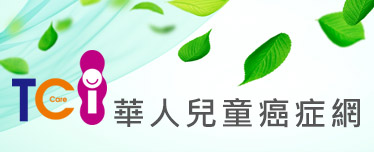染髮劑、其他美髮產品和癌症風險
為什麼有人會擔心染髮劑可能致癌?
染髮劑是使用化學物質改變頭髮的髮色。染髮劑可分為「永久性」、「半永久性」和「暫時性」三種主要類型。
目前市售的永久性染髮劑中,大約80%的永久性染髮劑是使用無色染料媒介物和染料結合劑。含有過氧化氫能讓中間體和顯色劑相互反應,形成顏料分子。使用較高濃度的中間媒介物,可以形成較深的顏色。
其他類型的染髮劑,已知的有半永久性和暫時性染髮劑,它們沒使用這種化學作用反應,而是直接沾染頭髮的彩色化合物。
根據報導,染髮產品中的某些化學物質是致癌的(致癌)(1、2),其中包括芳香胺,它們在早期永久性染髮劑配方中經常被用作染劑的中間媒介物。
在20世紀70年代中後期,製造商改變了永久性染髮劑產品的成分,以去除一些用作在染劑中間媒介物的致癌化學物質(1、3、4)。目前尚不清楚用於染髮劑中的那些化學物質是否具有致癌性(5)。
工作經常使用染髮劑的人,如專業美髮師,可能比在美容院染髮的人或在自己在家染髮的人(及"被染髮的人"),更容易接觸到這些染劑中潛在的有害化學物質。因此,許多進行的研究,希望能了解在工作環境暴露於染髮劑的美髮師和使用染髮劑的人,相關事宜。
估計,美國、日本和歐盟中有50%到80%的婦女曾使用過染髮劑(6)。有鑑於染髮劑產品的廣泛使用,即使這些產品對癌症風險有哪怕是有很小的影響,也有可能會轉為對公共健康相當大的影響。
從事美髮師和理髮師是否會有較高罹患癌症的風險?
2010年,國際癌症研究機構(IARC)的一份報告指出,專業美髮師所接觸的某些化學物質 "可能會對人類產生致癌性"(6)。這個結論是基於許多研究所發現,工作中接觸染髮劑的美髮師和理髮師會增加罹患膀胱癌的風險(1、7)。2010年一個整合42個研究中的統合分析發現,一個人從事美髮師工作的時間越長,他們罹患膀胱癌的可能性就越大,做美髮師至少10年以上的人罹患膀胱癌的可能性,幾乎是那些從未做過美髮師的人兩倍(7)。
一項研究調查·瑞典美髮師在不同時期的癌症風險。該研究發現近幾十年來風險沒有增加,顯示專業美髮師使用不含有芳香胺的染髮劑後,沒有增加罹患膀胱癌的風險(8)。
有染髮的人是否會增加罹患癌症的風險?
對一群人進行長期追蹤的流行病學研究(世代研究)或對罹患有和未罹患特定癌症的人進行研究(回溯性研究),研究個人使用染髮劑和幾種癌症風險之間的可能關聯。根據對現有證據的審查,國際癌症研究機構(IARC)工作組認為,總體上來說,個人使用到染髮劑是"無法歸類它會對人類造成致癌性"(6)。
膀胱癌:2014年從17個研究中進行的匯總分析發現,沒有證據顯示與個人使用染髮劑與增加膀胱癌風險有關(9)。然而,對於個人使用永久性染髮劑,與膀胱癌有關的證據是不一致的。一些研究(10-12)發現沒有任何關聯,而其他研究則發現於特定的族群中的次族群有關聯(13-15)。
非何杰金氏淋巴瘤(NHL):許多研究調查個人使用染髮劑和罹患非何杰金氏淋巴瘤(NHL)風險之間的關係,但結果發現是相互矛盾。一個對四個病例對照研究的匯總(合併)分析發現,1980年以前開始使用染髮劑的女性(在配方改變去除致癌化合物之前),其罹患非何杰金氏淋巴瘤(NHL)的可能性是從未使用過染髮劑女性的1.3倍,而在1980年以後開始使用染髮劑的婦女並沒有增加罹患NHL的風險(16)。2020年的一項大型前瞻性世代研究報告指出,個人使用染髮劑與罹患非何杰金氏淋巴瘤之間並沒有關聯(12)。
乳癌:許多研究調查使用染髮劑和乳癌之間可能存在的關聯,結果有好有壞,也不一致。然而,最近許多研究擴大女性範圍並且進行更長時間的追蹤,並對染髮劑和其他乳癌風險因子進行了更詳細的分析,發現某些方式的接觸可能與增加罹患風險有關。
例如,美國一個大型的世代研究,包括大多數白人婦女,報告指出隨著接觸染髮劑的增加,會增加罹患乳癌和荷爾蒙受體陰性的乳癌(12)。另一項對使用深色或永久性染髮劑的美國女性的前瞻性研究發現,報告指出使用任何染髮劑的婦女罹患乳癌的風險比那些沒有使用的女性高(17)。當作者按種族群體分析資料時,他們發現在非西班牙裔白人婦女中,有使用過染髮劑的人其罹患乳癌的可能性是沒有使用過人的1.07倍,而在黑人婦女中,使用過染髮髮劑而罹患乳癌的可能性是未使用者的1.45倍(17)。一些研究發現,在家自己使用永久性染髮劑的人,其罹患乳癌的風險高於比那些由專業人士染髮的人(17、18)。
其他癌症:儘管一些個別的研究顯示,使用染髮劑和罹患白血病的風險有關聯,但在一項20個研究統合分析中顯示,它們的關聯很小,也沒有統計學上的意義(19)。此外,一項大型的世代研究發現,曾經使用染髮劑和白血病的風險之間沒有關聯,但可能有非常小的風險會增加罹患基底細胞癌(尤其是頭髮是自然淺色的女性)和卵巢癌(12)。
使用頭髮直髮產品或拉直頭髮軟化劑產品的人,是否會增加罹患癌症的風險?
使用拉直頭髮或頭髮軟化劑的療程,其含有多種混合的化學物質,一些配方是含有致癌物質甲醛作為有效成分。幾項研究發現,使用拉直頭髮或頭髮軟化劑與之後罹患乳癌之間存在關聯。
- 一項在紐約和新澤西州的大型病例對照研究中指出,曾經使用過化學頭髮拉直軟化劑的白人女性,其罹患乳癌的可能性是未使用者的1.7倍(20),但在黑人女性中未發現這種關聯。
- 在另一個大型病例對照研究中顯示,曾經使用過這些產品(使頭髮拉直產品)的迦納婦女,其罹患乳癌的可能性是未使用的1.6倍(21)。
- 美國的一個大型前瞻性研究發現,在過去12個月中每月至少使用一次直髮產品的女性,其罹患乳癌的可能性是未使用的女性的1.3倍(17)。在同一群的女性中,其青春期就頻繁使用直髮和燙髮產品與停經前發生高風險的乳癌有關(22)。
- 一項針對黑人女性的全國性前瞻性研究發現,證據顯示,大量使用含有鹼液(洗濯用的鹼水)的直髮軟化劑比從未使用或少量使用直髮軟化劑的人,更有可能罹患雌激素受體陽性(ER+)乳癌(23)。
最近,一項大型世代研究發現,在過去12個月中使用過任何直髮產品(將頭髮拉直產品)的女性,其罹患子宮內膜癌的風險是那些從未使用過這類產品的女性的1.8倍(24)。
由於拉直頭髮的產品和直髮軟化劑含有不同的化學成分,未來的研究將放在縮小是那些化學成分會對健康產生特定的影響。
Selected References
- Bolt HM, Golka K. The debate on carcinogenicity of permanent hair dyes: New insights. Critical Reviews in Toxicology 2007; 37(6):521–536.
- Turesky RJ, Freeman JP, Holland RD, et al. Identification of aminobiphenyl derivatives in commercial hair dyes. Chemical Research in Toxicology 2003; 16(9):1162–1173.
- Corbett JF. An historical review of the use of dye precursors in the formulation of commercial oxidation hair dyes. Dyes and Pigments 1999; 41(1–2):127–136.
- Takkouche B, Etminan M, Montes-Martinez A. Personal use of hair dyes and risk of cancer: A meta-analysis. JAMA 2005; 293(20):2516–2525.
- He L, Michailidou F, Gahlon HL, Zeng W. Hair dye ingredients and potential health risks from exposure to hair dyeing. Chemical Research in Toxicology 2022; 35(6):901–915.
- International Agency for Research on Cancer. IARC Monographs on the Evaluation of Carcinogenic Risks to Humans. Volume 99: Some Aromatic Amines, Organic Dyes, and Related Exposures. 2010.
Accessed at Exit Disclaimer on February 22, 2022. - Harling M, Schablon A, Schedlbauer G, Dulon M, Nienhaus A. Bladder cancer among hairdressers: A meta-analysis. Occupational and Environmental Medicine 2010; 67(5):351–358.
- Czene K, Tiikkaja S, Hemminki K. Cancer risks in hairdressers: Assessment of carcinogenicity of hair dyes and gels. International Journal of Cancer 2003; 105(1):108-112.
- Turati F, Pelucchi C, Galeone C, Decarli A, La Vecchia C. Personal hair dye use and bladder cancer: A meta-analysis. Annals of Epidemiology 2014; 24(2):151–159.
- Kogevinas M, Fernandez F, Garcia-Closas M, et al. Hair dye use is not associated with risk for bladder cancer: Evidence from a case–control study in Spain. European Journal of Cancer 2006; 42(10):1448–1454.
- Lin J, Dinney CP, Grossman HB, Wu X. Personal permanent hair dye use is not associated with bladder cancer risk: Evidence from a case–control study. Cancer Epidemiology, Biomarkers & Prevention 2006; 15(9):1746–1749.
- Zhang Y, Birmann BM, Han J, et al. Personal use of permanent hair dyes and cancer risk and mortality in US women: Prospective cohort study. British Medical Journal 2020; 370:m2942.
- Koutros S, Silverman DT, Baris D, et al. Hair dye use and risk of bladder cancer in the New England bladder cancer study. International Journal of Cancer 2011; 129(12):2894–2904.
- 14. Gago-Dominguez M, Castelao JE, Yuan JM, Yu MC, Ross RK. Use of permanent hair dyes and bladder cancer risk. International Journal of Cancer 2001; 91(4):575–579.
- Andrew AS, Schned AR, Heaney JA, Karagas MR. Bladder cancer risk and personal hair dye use. International Journal of Cancer 2004; 109(4):581–586.
- Zhang Y, de Sanjose S, Bracci PM, et al. Personal use of hair dye and the risk of certain subtypes of non-Hodgkin lymphoma. American Journal of Epidemiology 2008; 167(11):1321–1331.
- Eberle CE, Sandler DP, Taylor KW, White AJ. Hair dye and chemical straightener use and breast cancer risk in a large US population of black and white women. International Journal of Cancer 2020; 147(2):383–391.
- Rao R, McDonald JA, Barrett ES, et al. Associations of hair dye and relaxer use with breast tumor clinicopathologic features: Findings from the Women's Circle of Health Study. Environmental Research 2022; 203:111863.
- Towle KM, Grespin ME, Monnot AD. Personal use of hair dyes and risk of leukemia: A systematic literature review and meta-analysis. Cancer Medicine 2017; 6(10):2471–2486.
- Llanos AAM, Rabkin A, Bandera EV, et al. Hair product use and breast cancer risk among African American and White women. Carcinogenesis 2017; 38(9):883–892.
- Brinton LA, Figueroa JD, Ansong D, et al. Skin lighteners and hair relaxers as risk factors for breast cancer: Results from the Ghana breast health study. Carcinogenesis 2018; 39:571–579.
- White AJ, Gregoire AM, Taylor KW, et al. Adolescent use of hair dyes, straighteners and perms in relation to breast cancer risk. International Journal of Cancer 2021; 148(9):2255–2263.
- Coogan PF, Rosenberg L, Palmer JR, et al. Hair product use and breast cancer incidence in the Black Women's Health Study. Carcinogenesis 2021; 42(7):924–930.
- Chang CJ, O'Brien KM, Keil AP, et al. Use of straighteners and other hair products and incident uterine cancer. Journal of the National Cancer Institute 2022:djac165. doi: 10.1093/jnci/djac165.
資料來源:“Hair Dyes, Other Hair Products, and Cancer Risk was originally published by the National Cancer Institute.”
編審人員:馬偕紀念醫院癌症中心 呂宜興 主任
更新日期:2023/2/03


